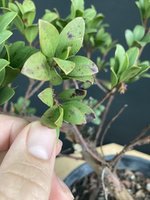Potawatomi13
Imperial Masterpiece
Arctostaphylos are also symbiotic with ectomycorrhizals so maybe add an innoculant would help. Just speculating based on botanical info.[/QUOTE said:If you have ANY native soil with it there will be the proper kind with the plant already. Don't waste money buying something that may be completely different.














